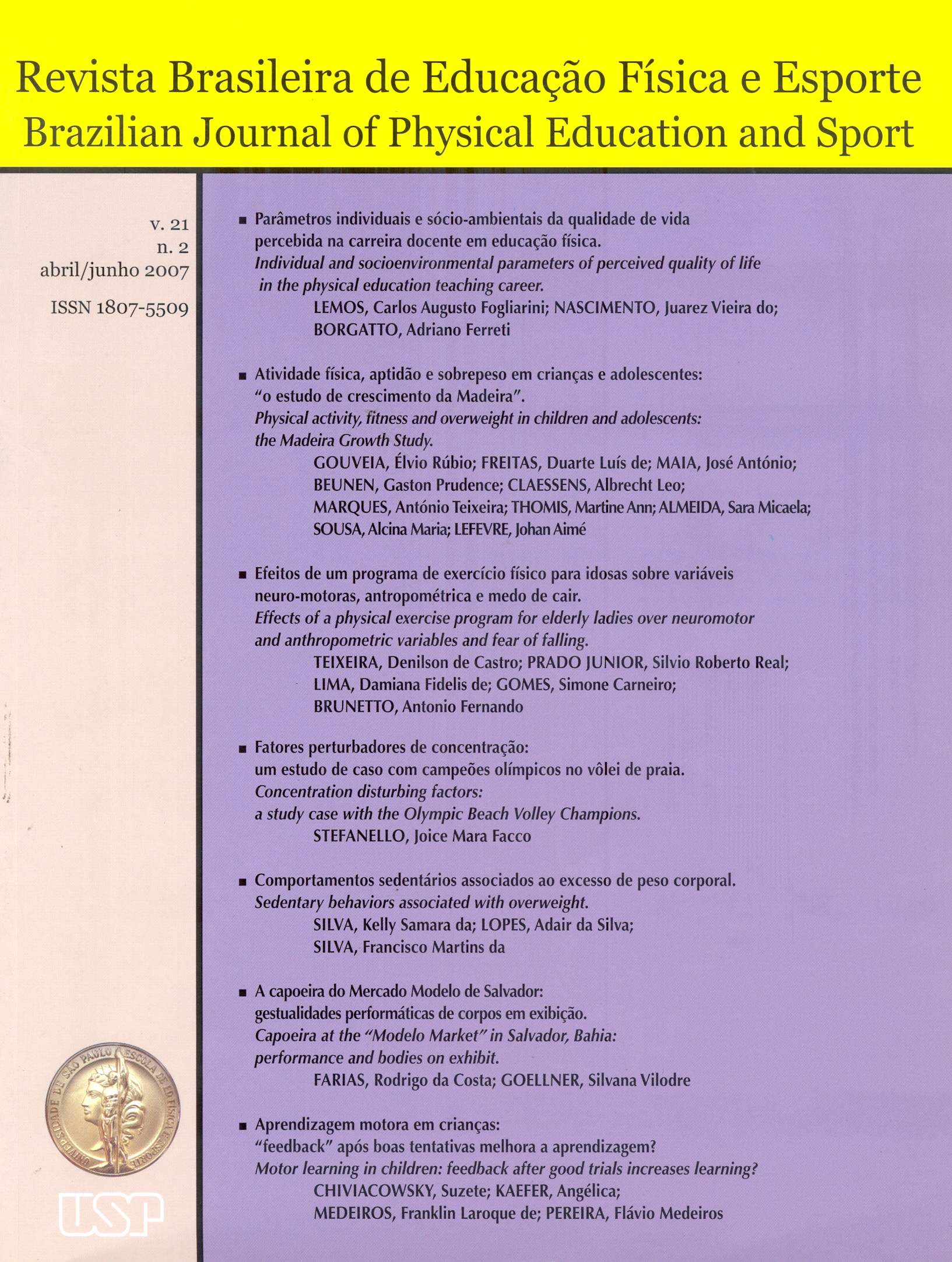Physical activity, fitness and overweight in children and adolescents: the Madeira Growth Study
DOI:
https://doi.org/10.1590/S1807-55092007000200002Keywords:
Body mass index, Physical activity, Fitness, Children, AdolescentsAbstract
The purpose of this study was to compare the physical activity level and fitness among overweight and non-overweight children and adolescents. The sample included 507 subjects who participated in the Madeira Growth Study, a mixed longitudinal study with five cohorts followed at annual intervals for three consecutive years. A total of 1505 subjects, 761 boys and 744 girls, 7-18 year-olds, was used in a cross-sectional analysis of the data. Somatic characteristics include stature and body weight. Physical activity was estimated by means of a questionnaire and an interview. Physical fitness was measured with the Eurofit test battery. Body mass index was used as an overweight indicator. The sample was divided into two overweight categories: overweight (including overweight and obese children and adolescents) and non-overweight (remaining part of the sample) using the cut-off scores proposed by Cole et al. (2000). Mean differences between the overweight categories were tested with a two-sample t-test. Physical activity as sport and leisure time indexes was not associated to overweight status of children and adolescents. Sports practice was higher in non-overweight boys. Non-overweight boys and girls obtained better results for flamingo balance, standing broad jump, sit ups, flexed arm hang, shuttle run and 12 minute run/walk. Overweight girls were stronger (handgrip) than non-overweight girls. A weak relationship was demonstrated for physical activity whereas for physical fitness a strong inverse association with overweight status was found.Downloads
Download data is not yet available.
Downloads
Published
2007-06-01
Issue
Section
naodefinida
License
Todo o conteúdo da revista, exceto onde está identificado, está licenciado sob uma Licença Creative Commons (CC-BY)
How to Cite
Gouveia, Élvio R., Freitas, D. L. de, Maia, J. A., Beunen, G. P., Claessens, A. L., Marques, A. T., Thomis, M. A., Almeida, S. M., Sousa, A. M., & Lefevre, J. A. (2007). Physical activity, fitness and overweight in children and adolescents: the Madeira Growth Study . Brazilian Journal of Physical Education and Sport, 21(2), 95-106. https://doi.org/10.1590/S1807-55092007000200002


